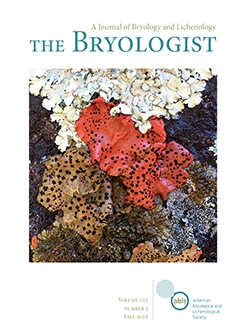Mountain top environments are particularly vulnerable to climate change effects, given that biological organisms in these systems live at specific temperature conditions. The poikilohydric nature of lichens emphasizes variables like water holding capacity (WHC) and the hydrophobicity of the thallus to understand the species occupational patterns in altitudinal gradients and microsites. WHC and hydrophobicity were measured in 3 saxicolous species with 2 different morphologies in an elevational mountain gradient of Central Argentina: Usnea amblyoclada, Parmotrema reticulatum and Parmotrema warmingii. We measured WHC in three elevations corresponding to the distribution range of the species, and 3 microsite conditions: north (equatorial-facing)/south (polar-facing) aspect with high steep inclination >70° and rock outcrops with low steep inclination <20°. Results show differences between U. amblyoclada, P. reticulatum, and P. warmingii for measured traits. Hydrophobicity and WHC of U. amblyoclada showed a significant interaction between microsite and elevation. WHC of P. reticulatum was greater at 900 m.a.s.l. while its hydrophobicity was higher at 1800 m.a.s.l. WHC and hydrophobicity of P. warmingii are higher in samples from south-facing rocks. Results suggest that P. reticulatum can acclimate at microsite level without the ability to cope with more drastic environmental demands, losing the possibility to migrate to higher elevations in a climatic change scenario, while U. amblyoclada show higher intraspecific water retention variations, hence a wider potential distribution. P. warmingii could migrate to more protected microsites but will tend to disappear in an extreme scenario where temperature will increase.
How to translate text using browser tools
22 August 2022
Water regulation dynamics of lichens as functional traits could predict future climate change scenarios in an elevational gradient from Central Argentina
Raúl Díaz Dominguez,
Daniel Stanton,
Mariana Peralta,
Juan Manuel Rodriguez
ACCESS THE FULL ARTICLE

The Bryologist
Vol. 125 • No. 3
Fall 2022
Vol. 125 • No. 3
Fall 2022
hydrophobicity
microsites
Parmotrema
South America
Usnea
water holding capacity




